A heavy block of mass m is supported by a cord C attached to the ceiling, and another cord D is attached to the bottom of the block. If a sudden jerk is given to D, then
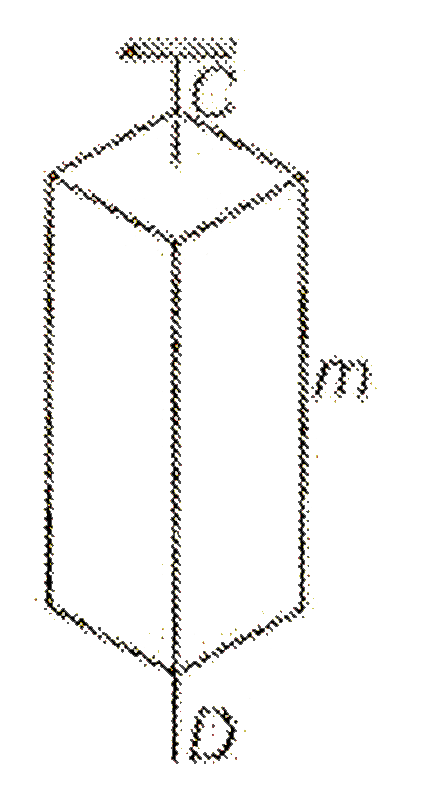
cord C breaks
cord D breaks
cord C and D both Break
None of the cords breaks
The correct Answer is:B
Cord D will breaks due to inertia offered by the block of mass m.
Topper's Solved these Questions
- NEWTONS LAWS OF MOTION AND FRICTIONBOOK - BITSAT GUIDECHAPTER - NEWTONS LAWS OF MOTION AND FRICTIONEXERCISE - BITSAT Archives
23 Videos
- MOTION IN !,2,2 DIMENSIONS AND POJECTILE MOTIONBOOK - BITSAT GUIDECHAPTER - MOTION IN !,2,2 DIMENSIONS AND POJECTILE MOTIONEXERCISE - All Questions
86 Videos
- ROTATIONAL MOTIONBOOK - BITSAT GUIDECHAPTER - ROTATIONAL MOTIONEXERCISE - BITSAT Archives
9 Videos
Similar Questions
A block of mass M is supported by a cord C from a rigid support, and another cord D is attached to the bottom of the block. If D is given a sudden jerk D breaks But if D is pulled steadily, cord C breaks. Why ?
View SolutionA block of mass M is suspended by a corf A from the ceiling and another cord B is attached to the bottom of the block as shown in Which string will break if we pull the string B
(a) with a sudden jerk,
(b) steadily ?
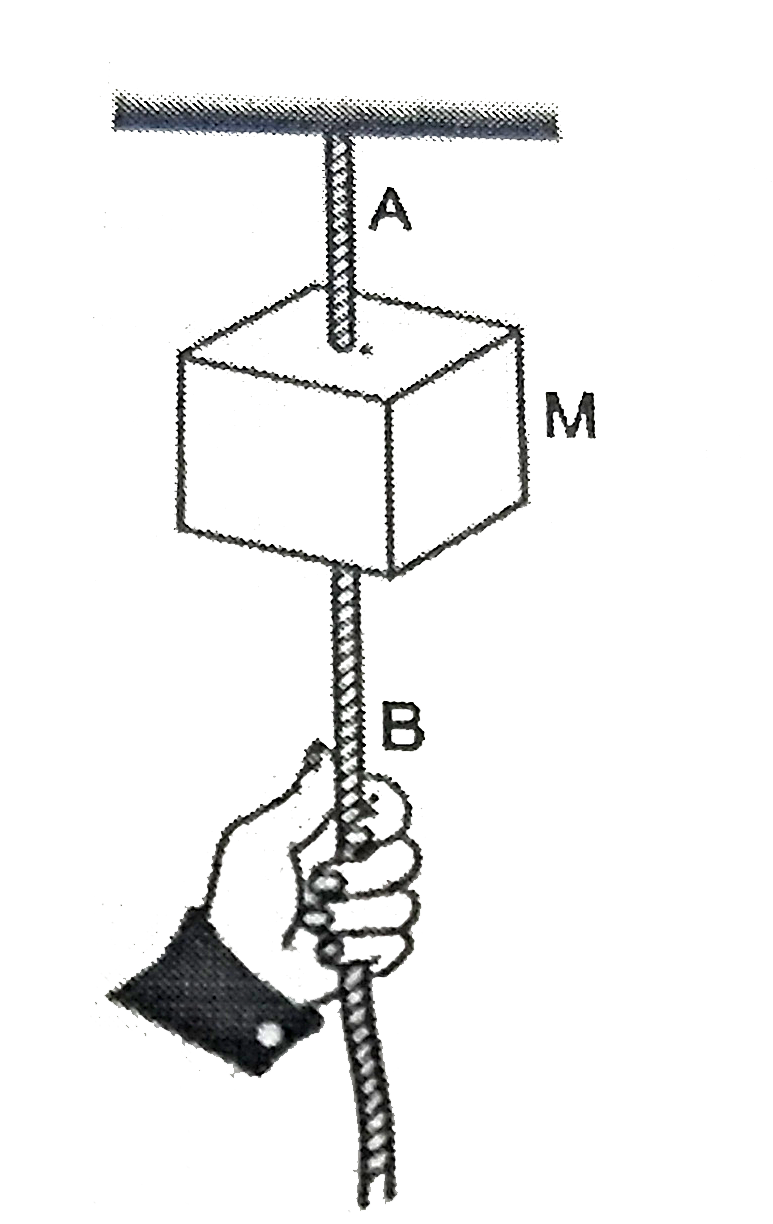
View Solution
Knowledge Check
A block of mass m is suspended from a fixed support with the help of a cord. Another identical cord is attached to the bottom of the block. Which of the following statement is/are true?
AIf the lower cord is pulled suddenly, only the upper cord will break.BIf the lower cord is pulled suddenly, only the lower cord will break.CIf pull on the lower cord is inceased gradually, only the upper cord will break.DIf pull on the lower cord is increased gradually, only the upper cord will break.A mass of 1kg is suspended by a string A. Another string C is connected to its lower end (see figure). If a sudden jerk is given to C, then
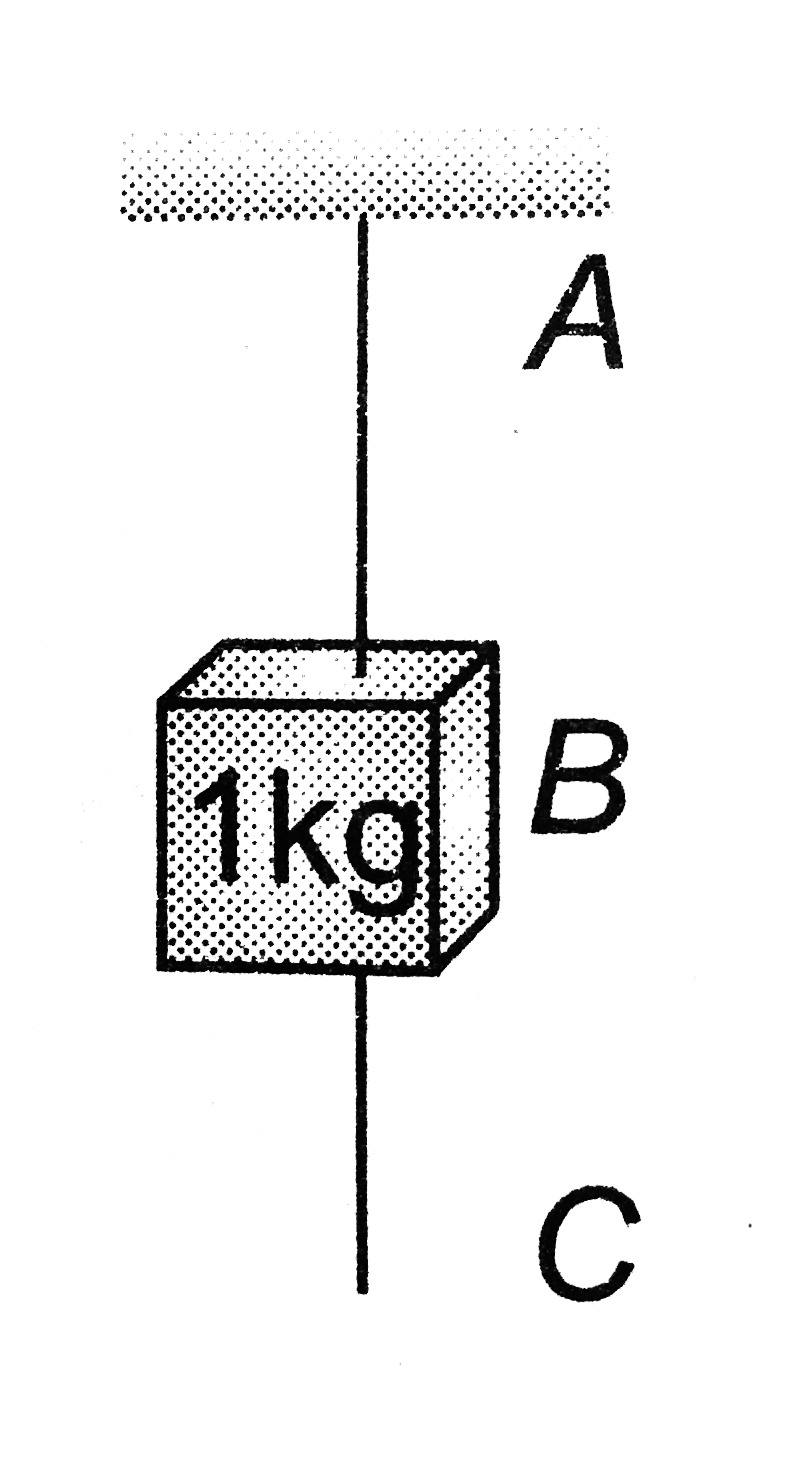 AThe portion AB of the string will breakBThe portion BC of the string will breakCNone of the string will breakDThe mass will start rotating
AThe portion AB of the string will breakBThe portion BC of the string will breakCNone of the string will breakDThe mass will start rotatingA spring has natural length 40cm and spring constant 500N/m. A block of mass 1kg is attached at one end of the spring and other end of the spring is attached to a ceiling. The block is relesed from the position, where the spring has length 45cm.
Athe block will perform SHM of amplitude 5cmBthe block will have maximum velocity 30√5cm/sCthe block will have maximum acceleration 15m/s2Dthe minimum elastic potential energy of the spring will be zero
A blocked of mass m is attached with two strings as shown in figure .Draw the free body diagram of the block.
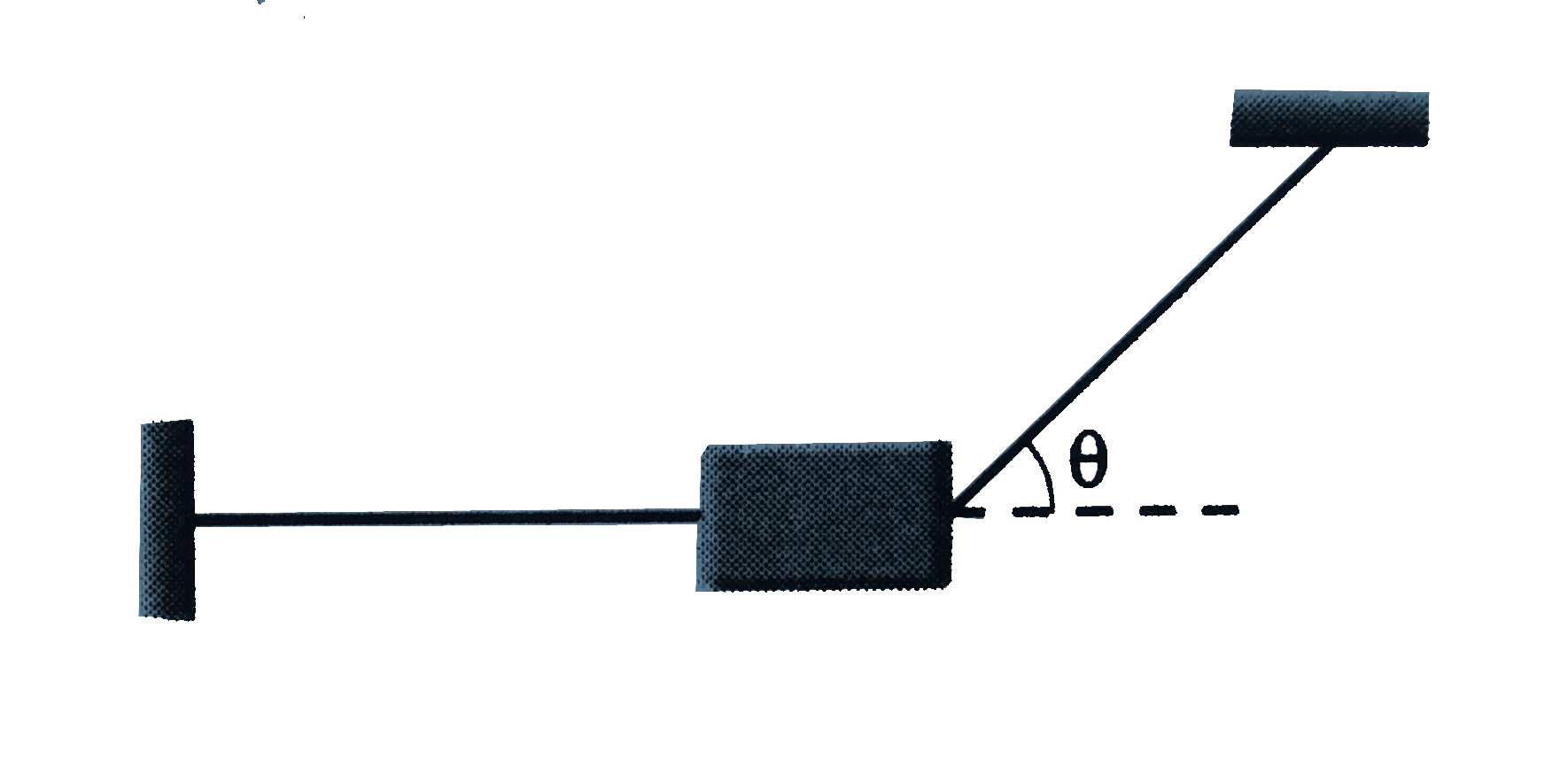
View SolutionA uniform rope of mass m and length L is attached to the ceiling of a lift. The other end of the rope is attached to a block of mass M. The lift is moving up with a constant acceleration a0. Find the tension in the rope at a distance x from the ceiling as shown in the diagram.
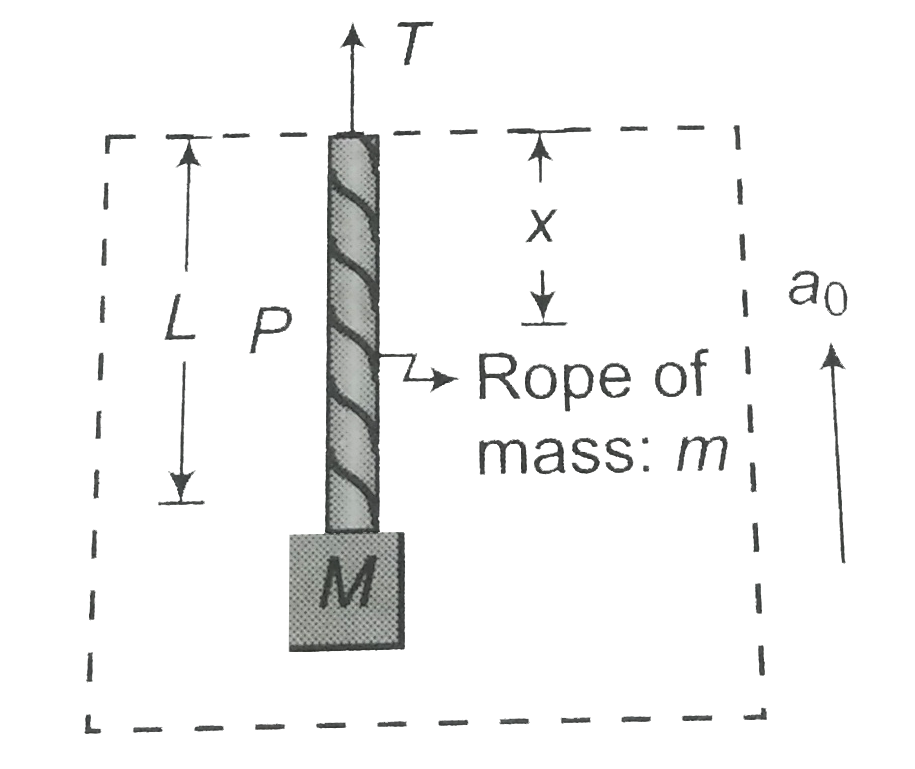
View Solution(a) A 10-kg block is supported by cord that runs to a spring scale, which is supported by another cord from the ceiling as shown in fig. What is the reading on the scale?

(b) In Fig. the block is supported by a cord that runs around a pulley and to a scale. The opposite end of the scale is attached by a cord to a wall. What is the reading of the scale?

(c ) In fig. the wall has been replaced with a second 10-kg block, what is the reading on the scale now?
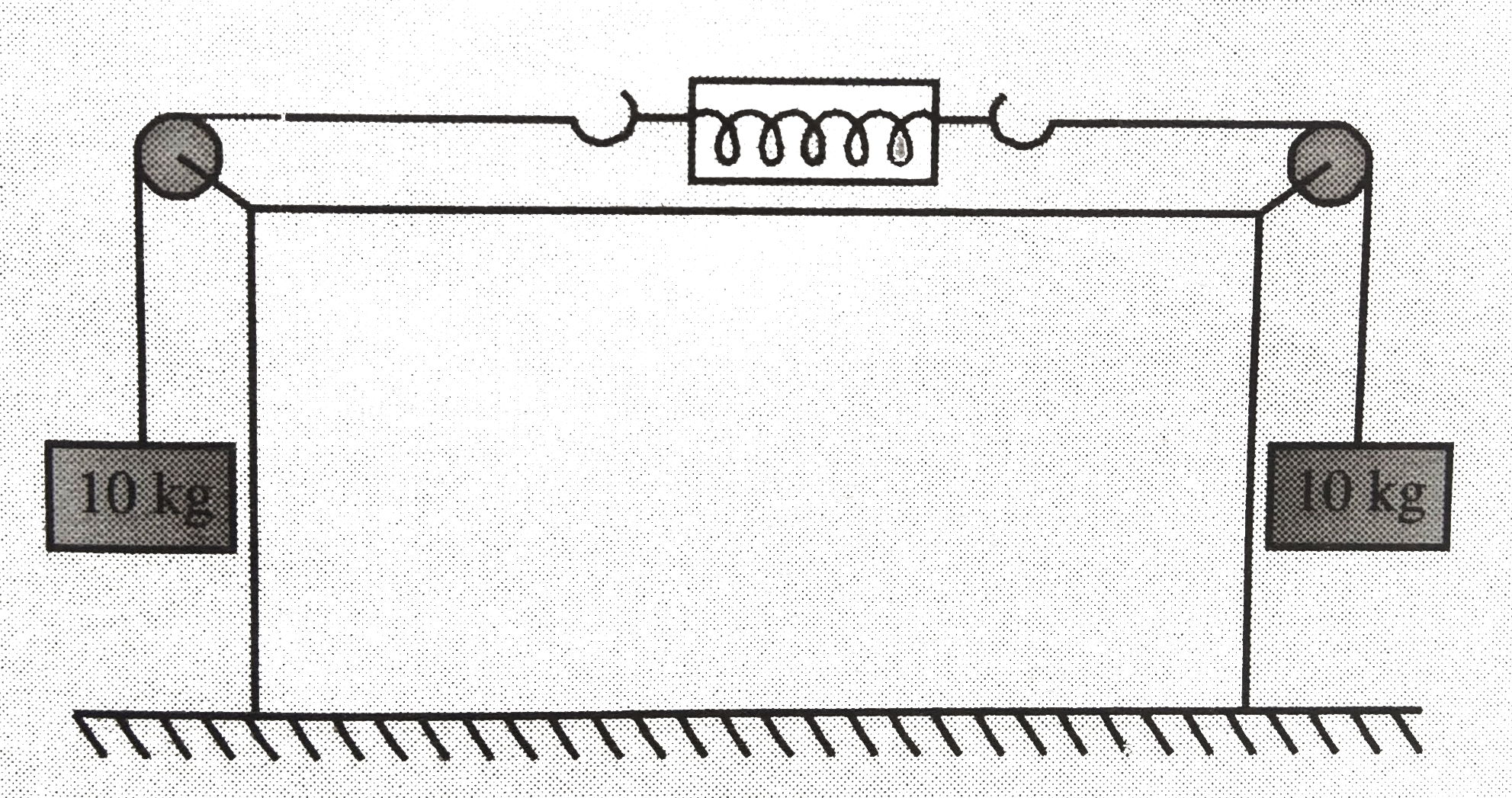 .
.
View SolutionA block of mass m is dropped onto a spring of constant k from a height h. The second end of the spring is attached to a second block of mass M as shown in figure. Find the minimum value of h so that the block M bounces off the ground. If the block of mass m sticks to the spring immediately after it comes into contact with it.
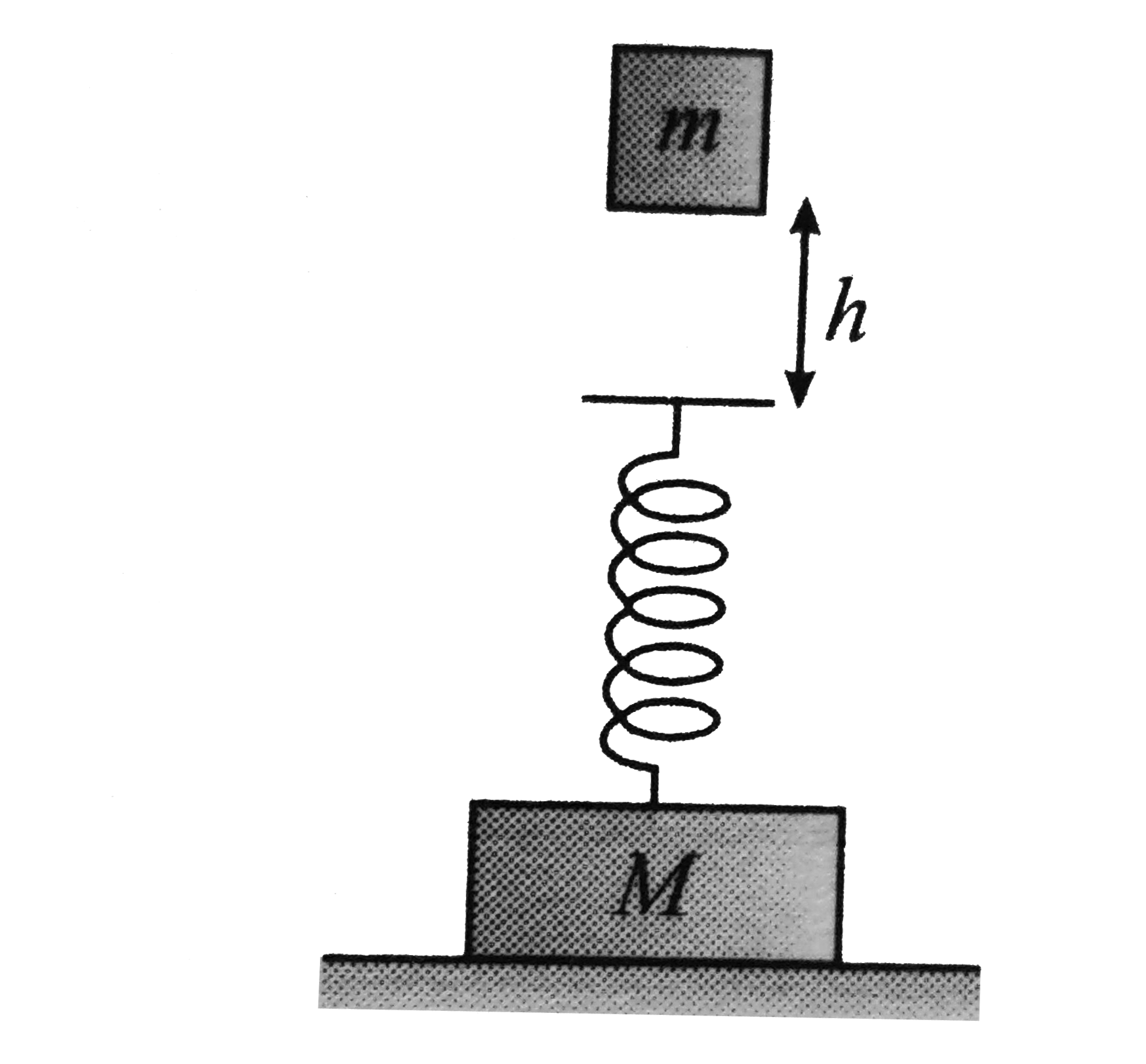
View SolutionA block of mass m is suspended by a rubber cord of natural length l=mgk, where k is force constant of the cord. The block is lifted upwards so that the cord becomes just tight and then block is released suddently. Which of the following will not be true?
View Solution
